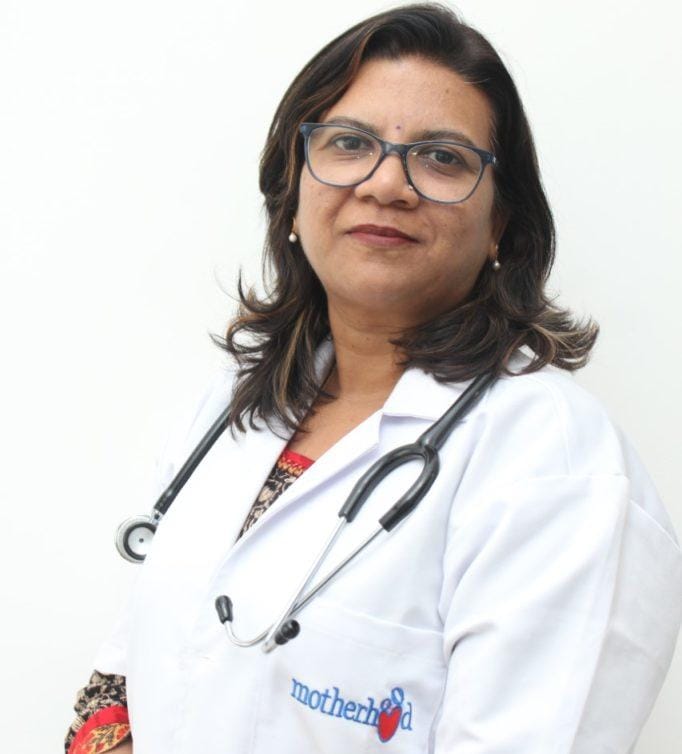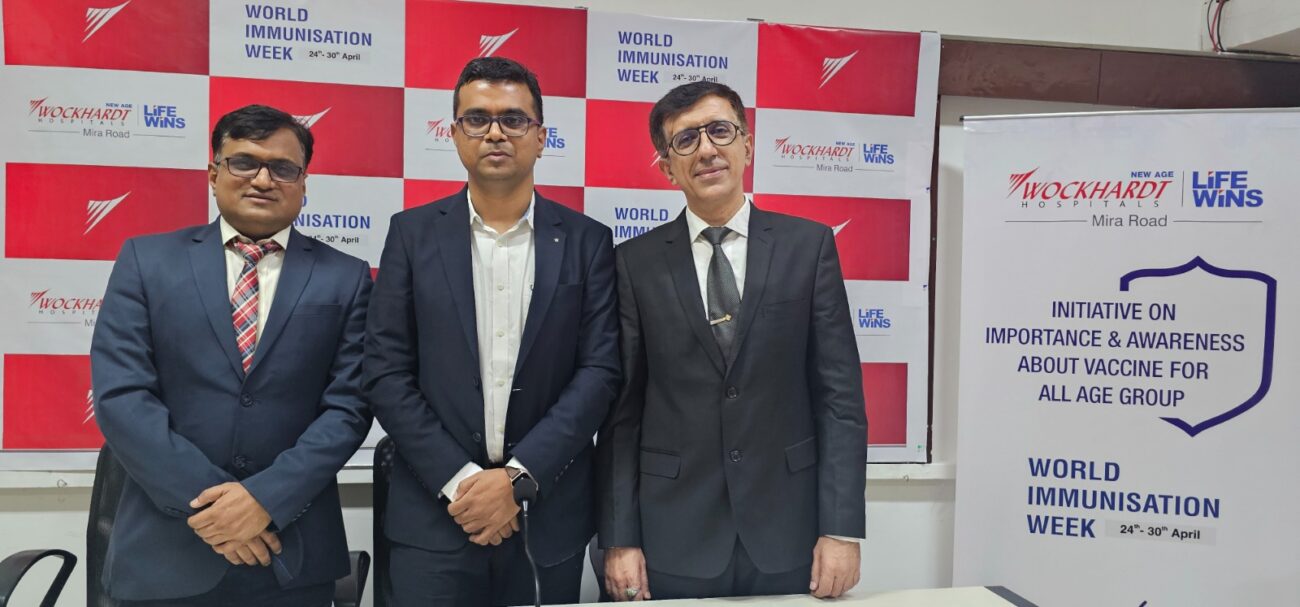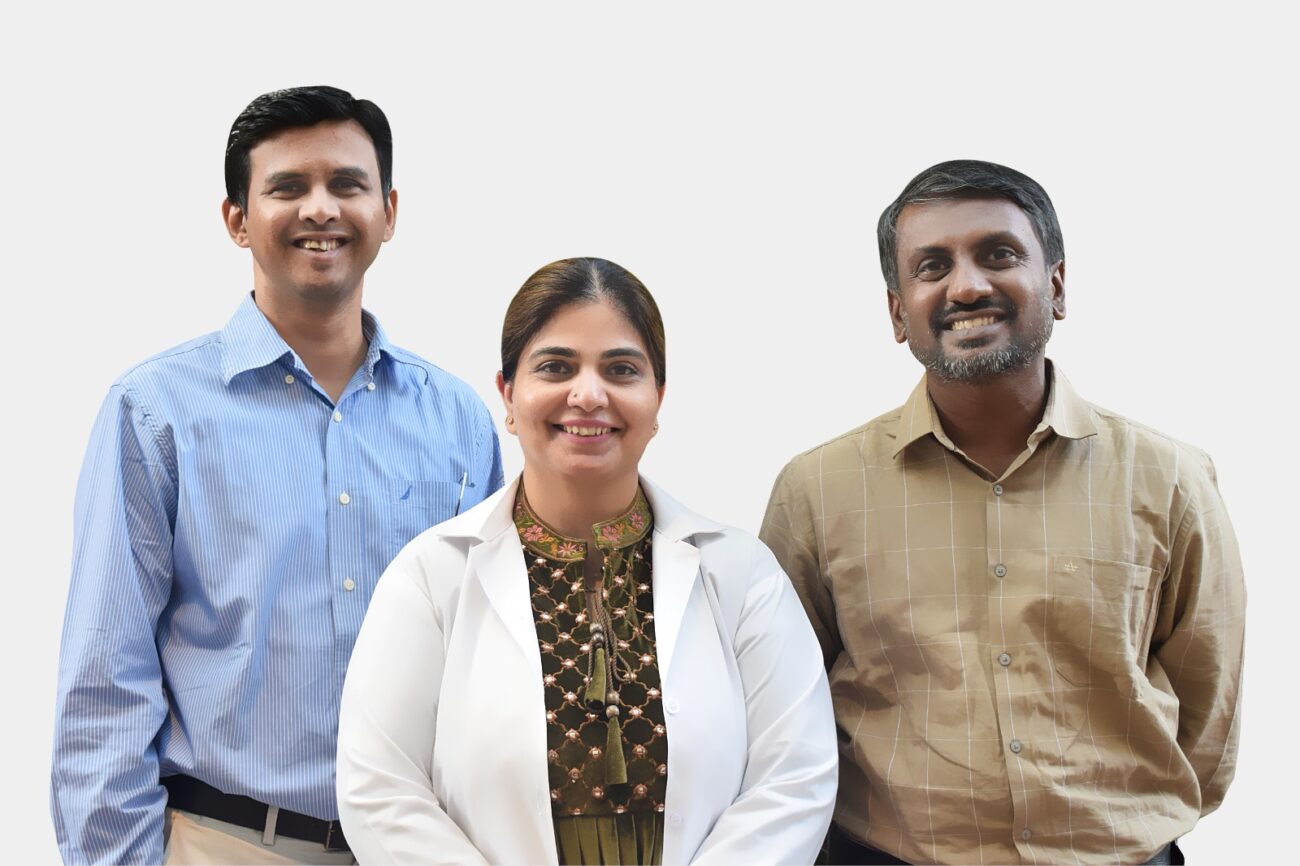A 32-year-old woman with Placenta Previa and Huge Fibroid, weighing a remarkable 560 grams, has successfully given birth to a healthy baby.”
A team of doctors led by Dr Shaifali Patil, Consultant - Obstetrician & Gynecologist, Motherhood Hospitals, Kharghar assisted a 32-year-old woman with placenta previa and a significant fibroid measuring 10x10 cm (a fibroid which looks like a handball).

A team of doctors led by Dr Shaifali Patil, Consultant – Obstetrician & Gynecologist, Motherhood Hospitals, Kharghar assisted a 32-year-old woman with placenta previa and a significant fibroid measuring 10×10 cm (a fibroid which looks like a handball). Thanks to their efforts, the mother gave birth to a healthy baby, weighing 2.7 kg. and both are currently doing well.
Mrs. Anamika Mehta (name changed) *, a 32-year-old resident of Uran in Navi Mumbai, and a banker by profession was filled with happiness when she found out that she was pregnant for the second time. During a routine checkup with a local gynecologist in her fifth month of pregnancy, it was discovered that the patient had complete placenta previa, a condition where the placenta is located in the lower segment of the uterus, covering the cervix. Additionally, she was found to have a large fibroid. Further examination through subsequent sonography confirmed that the placenta had not migrated to the upper segment of the uterus. Nonetheless, the patient was recommended to seek treatment at Motherhood Hospitals in Kharghar.
Dr. Shaifali Patil, Consultant – Obstetrician & Gynecologist, Motherhood Hospitals, Kharghar said, “On arrival during 28 weeks of pregnancy, the patient’s condition was medically stable and through serial sonographies were done to keep track of baby weight and also the situation of the placenta, if there are any degenerative changes in the fibroid. After reviewing her reports, it was confirmed that she had complete placenta previa and a 10×10 cm myoma in her uterus.
Complete Placenta previa is a condition where the placenta partially or completely covers the opening of the uterus. The overall prevalence of placenta previa is 5.2 per 1,000 pregnancies. The dangers which are associated with Placenta previa can be severe vaginal bleeding during pregnancy or labor, excessive bleeding can lead to anemia, shock, and require emergency surgery. In fact, the baby may experience oxygen and nutrient deprivation which increases the risk of premature birth and prematurity complications and there can be a higher risk of the placenta attaching deeply to the uterine wall, requiring a hysterectomy.
There are many reasons which lead to placenta previa like lower egg implantation, uterine lining abnormalities (fibroids, scarring), Placental abnormalities, and multiple babies or pregnancies (twins, previous deliveries). In her case, it was the low implantation of gestational sac which means the fertilized egg attaches itself to a lower part of the uterus than it normally should. It is considered as a rare and dangerous condition in pregnancy.” Dr Patil added, “Myoma, also known as uterine fibroids, are noncancerous growths that develop in the uterus. They are composed of muscle and fibrous tissue and can vary in size and location within the uterus causing significant discomfort, placental complications, preterm labor, and abnormal bleeding. Our team closely monitored her pregnancy, conducting regular checkups and sonographies. It was observed that the placenta was located low in the uterus, completely covering the cervical os, which posed a risk of major hemorrhage or premature delivery.”
To mitigate these risks, Dr. Shaifali advised her to engage in complete bed rest as any strenuous activity, such as walking fast or lifting heavy weights, could potentially trigger bleeding and increase the chances of premature labor and even delivery. Mrs. Anamika expressed concern about the myoma and potential hemorrhage, which she didn’t have during her first pregnancy. Dr. Shaifali provided her with positive counseling, assuring her that if there was a risk of excessive blood loss during surgery, the myoma could be addressed at a later stage.
“During the 33rd week of her pregnancy, the patient experienced sharp abdominal pain and encountered difficulties with urination and bowel movements. After conducting an examination, it was determined that she was suffering from “red degeneration,” a condition where degenerative changes are seen in the fibroid during pregnancy. To alleviate her pain, she was administered paracetamol and antacid injections, which proved effective. The patient was discharged after two days with proper care instructions and scheduled follow-ups.”
“During the 36th week, the patient experienced labor pain, and an antenatal checkup revealed the possibility of bleeding. We decided to perform a successful cesarean section (LSCS) to ensure the safety of both mother and baby. Additionally, an open myomectomy was performed to remove the placenta and myoma. Cesarean was done in a regular manner after the baby was delivered, and the team also checked for bleeding as there was none during the c-section delivery. The decision to go ahead with myomectomy was made, because of the fact that the patient is hemodynamically stable (stability of blood pressure & heart rate). The patient delivered a healthy baby girl weighing 2.7 kg on 4th September 2023.” said Dr Patil.
Open myomectomy carries certain risks if not properly managed, including significant bleeding during the procedure, potential risk of miscarriage due to damage to the uterus or placenta, higher risk of infection affecting both mother and fetus, and an increased risk of uterine wall weakening and subsequent rupture during labor or future pregnancies. However, the skilled team of doctors managed to carry out the procedure risk-free. “It is crucial to educate patients about the potential complications they are going through during their pregnancy, while also providing positive counseling to empower them mentally. Regular antenatal checkups, proper nutrition, and close monitoring are essential components of managing high-risk pregnancies like this one,” underscored Dr Patil.
Despite the numerous challenges I encountered during my pregnancy, I am overwhelmed with joy as I celebrate the arrival of my second child. Despite the obstacles I faced, I am immensely grateful to the skilled medical team who ensured the safety and well-being of my baby. Thanks to their expertise and dedication, I have successfully given birth to a healthy infant who is thriving, and as parents, we are embracing milestones our baby is touching, as expected at this stage. From the bottom of my heart, I want to express my profound gratitude to Dr. Shaifali and the team who made this miracle possible,” concluded Anamika Mehta, the patient (name changed) *.






